Electrostatic loudspeakers have been part of my audiophile experience from the very beginning and I still marvel at the technology behind them. Peter Walker may have been the first to offer a commercially successful product with the Quad ESLs but he certainly wasn’t the first to experiment with the technology.
The history of electrostatic loudspeakers dates back to the early 20th century, when scientists and engineers first began exploring the use of electrostatic principles for sound reproduction. The basic idea of using an electrostatic force to vibrate a thin conductive diaphragm to produce sound was first demonstrated by Oliver Lodge, a British physicist, in the late 19th century.

In the 1920s and 1930s, several inventors and engineers, including Arthur Janszen and Paul L. Voigt, began developing and commercializing electrostatic loudspeaker designs. However, these early designs were limited by the available technology and were not widely adopted.
It was not until the mid-20th century that significant advancements in materials science and electronics made it possible to produce high-quality electrostatic speakers on a large scale. Companies such as Quad and MartinLogan emerged as leaders in the field, and electrostatic loudspeakers became popular among audiophiles and professional recording studios.
Today, electrostatic loudspeakers remain a niche product, appreciated by a dedicated group of enthusiasts for their clarity and accuracy, but they have not gained widespread adoption due to their high cost and complexity.

I vividly remember the day I flipped over the copy of Stereophile at the newsstand and saw my first pair of MartinLogan loudspeakers. Having inherited the family stereo in 1983 as my Bar Mitzvah gift, I was already on my audiophile journey but I was not prepared for the MartinLogan Sequel II loudspeakers that would inspire me to make high-end audio my career.
The Sequel II were my first high-end speakers but only the beginning of my journey which culminated with the MartinLogan reQuest speakers.
The reQuests were really large back in 1999 when I bought them and I’m sure most people would recoil with some hesitation if they came across a pair today.

Before I spent almost $5,000 on a pair of reQuests, I spent almost 8 years with the Aerius, Aerius i, and a pair of the original CLS speakers. I was such a huge fan of the company that I called their office in 1989 in Lawrence, Kansas because I had a question about my pair of Sequel II speakers.
Gayle Sanders answered the phone that day and so began my education when it came to electrostatic loudspeakers. The former co-Founder of MartinLogan joined us on the eCoustics podcast to discuss the history of the storied brand the evolution of electrostatic loudspeakers.
WTF is an Electrostatic Loudspeaker?
An electrostatic loudspeaker is a type of speaker that uses an electrostatic force to move a thin diaphragm, typically made of lightweight material such as Mylar, between two electrically charged metal plates. When an audio signal is applied to the grids, the diaphragm is driven back and forth, producing sound waves.
Electrostatic speakers are known for their wide frequency response, high accuracy, and low distortion, but they can also be more difficult to manufacture and design than conventional dynamic speakers.
Gayle Sanders shared with us during the podcast some of the schematics and images of the first MartinLogan designs and made it clear that it took an enormous amount of money and time to build panels that were not able able to offer high-end performance, but remain stable when used.
There are two main types of electrostatic loudspeakers: full-range and hybrid.
Full-range electrostatic speakers are self-contained units that use a single conductive diaphragm to produce all frequencies of sound. These speakers are known for their wide frequency response and accurate sound reproduction, but they can be expensive and challenging to integrate into a home audio system.
Hybrid electrostatic speakers, on the other hand, combine an electrostatic panel with a traditional dynamic woofer to produce a wider frequency range.

The electrostatic panel is responsible for reproducing high-frequency sounds, while the dynamic woofer handles low-frequency sounds. These speakers are a more affordable and practical alternative to full-range electrostatic speakers, but may not match their sound quality.
You may have read about “planar” and “curved” electrostatic loudspeaker and wondered if they are the same thing — they are not.
Planar Electrostatic Speakers are a type of electrostatic speaker, where the diaphragm is flat and is positioned between two parallel metal plates.
Curved Electrostatic Speakers offer a very different approach; the diaphragm is curved to form a cylinder or dome shape. This design helps to improve the sound dispersion and the overall audio quality. MartinLogan has used this approach since its inception.

Advantages?
What are the advantages of electrostatic loudspeakers over traditional dynamic loudspeakers?
Clarity and Accuracy: Electrostatic speakers are known for their exceptional clarity and accuracy, due in part to their thin diaphragm and the way they produce sound.
Low Distortion: The thin diaphragm of an electrostatic speaker has less mass than a traditional speaker cone, which reduces distortion and allows for a more accurate reproduction of the audio signal.
Wide Frequency Response: Electrostatic speakers have a wide frequency response, which allows them to reproduce a wide range of sounds, from deep bass to high treble, with equal clarity and accuracy.
Improved Sound Dispersion: The thin diaphragm of an electrostatic speaker also helps to improve the sound dispersion, as it radiates sound more evenly in all directions.
Disadvantages?
Having owned 5 pairs of MartinLogan Electrostatic Loudspeakers, I can confirm that the initial invest can be rather steep. You can certainly find used pairs online and that includes older models from Quad, Innersound, Soundlab, and MartinLogan — but there is the issue of panel replacement.
Gayle Sanders confirmed to us that any panel older than 12-15 years needs to be replaced; something that the MartinLogan factory based in Ontario can do. MartinLogan still has an office in Lawrence, Kansas, where the company started, but the new panels are made in the facility outside of Toronto.
Quad offers new models for sale, but restoration of the original ESLs or Quad ESL-63s can be a very expensive endeavor — and not something you should do yourself.
Electrostatic loudspeakers require space. Unless you can give this type of loudspeakers 2-3′ at a minimum from the wall behind them — they are probably not a good match for your room. I often placed my MartinLogan reQuest Loudspeakers 4-5′ from the wall behind them to experience the openness and enormous soundstage that they could recreate in my room.
Power?
It’s a myth that you need a very powerful amplifier to drive electrostatic loudspeakers. Stable amplifiers are a must into 4 or 2 Ohms.
Having owned 4 other pairs of MartinLogan speakers, power is definitely an issue. You can run tube amplifiers with certain designs but they need to be stable into 4 ohms and at least 50-75 watts/channel.
I would definitely recommend CJ (solid-state), Pass Labs, Mark Levinson (1980s or 1990s), Bryston, Classe Audio, Adcom, Aragon, and older Krell with these loudspeakers.
The amp that worked for me was a huge surprise. The Blue Circle BC6 SET Hybrid Amplifier which was only 25 watts/channel. Gilbert Yeung and I were friends for a number of years when I still lived in Toronto and I would make the trip to Innerkip on a regular basis to listen to his new amps and go for food. The BC6 did not operate like any 25 watt amplifier that I’ve ever heard and it matched the reQuest almost perfectly.
Electrostatic loudspeakers offer a level of transparency that dynamic loudspeakers still can’t match for the most part, but that requires greater flexibility when it comes to set-up and your choice of amplification. Get it right and you won’t ever want to go back to anything else.
Related Reading:







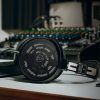



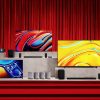



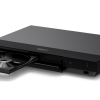
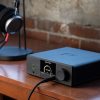

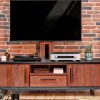




























Marc Silver
February 12, 2023 at 6:39 pm
As an owner of Electrostats since 1975 I concur. There is nothing as sonically accurate as an electrostatic speaker. I have articles explaining the technology as well. Also, I am one of the very few that has repaired various different models and can confirm this is not something for even the most advanced technician. That being said, I encourage your readers to take the time to seek out a dealer of one of the many available different electrostatic speaker designs and audition them. It is a transformative listening experience.
Ian White
February 13, 2023 at 2:38 pm
Marc,
After 5 pairs of MartinLogan loudspeakers…I totally agree.
Best,
Ian White